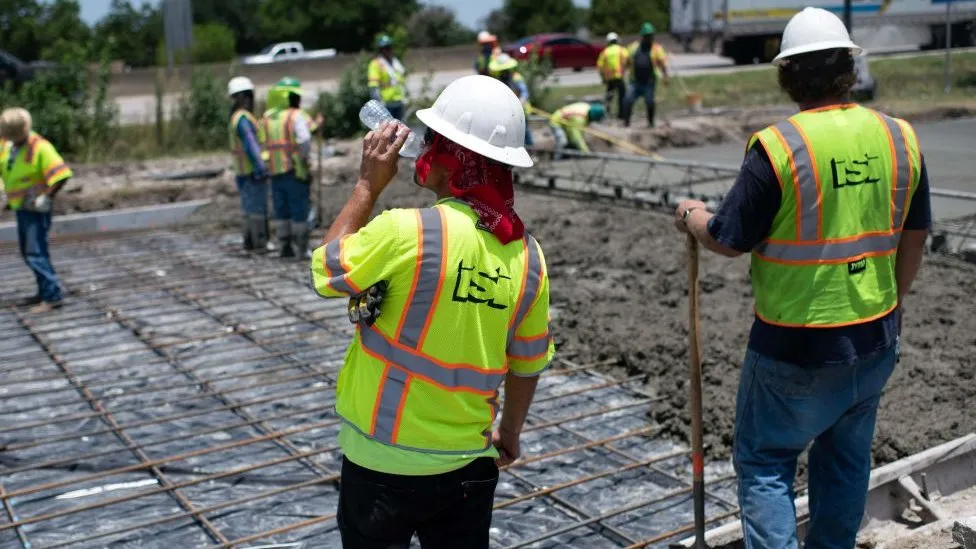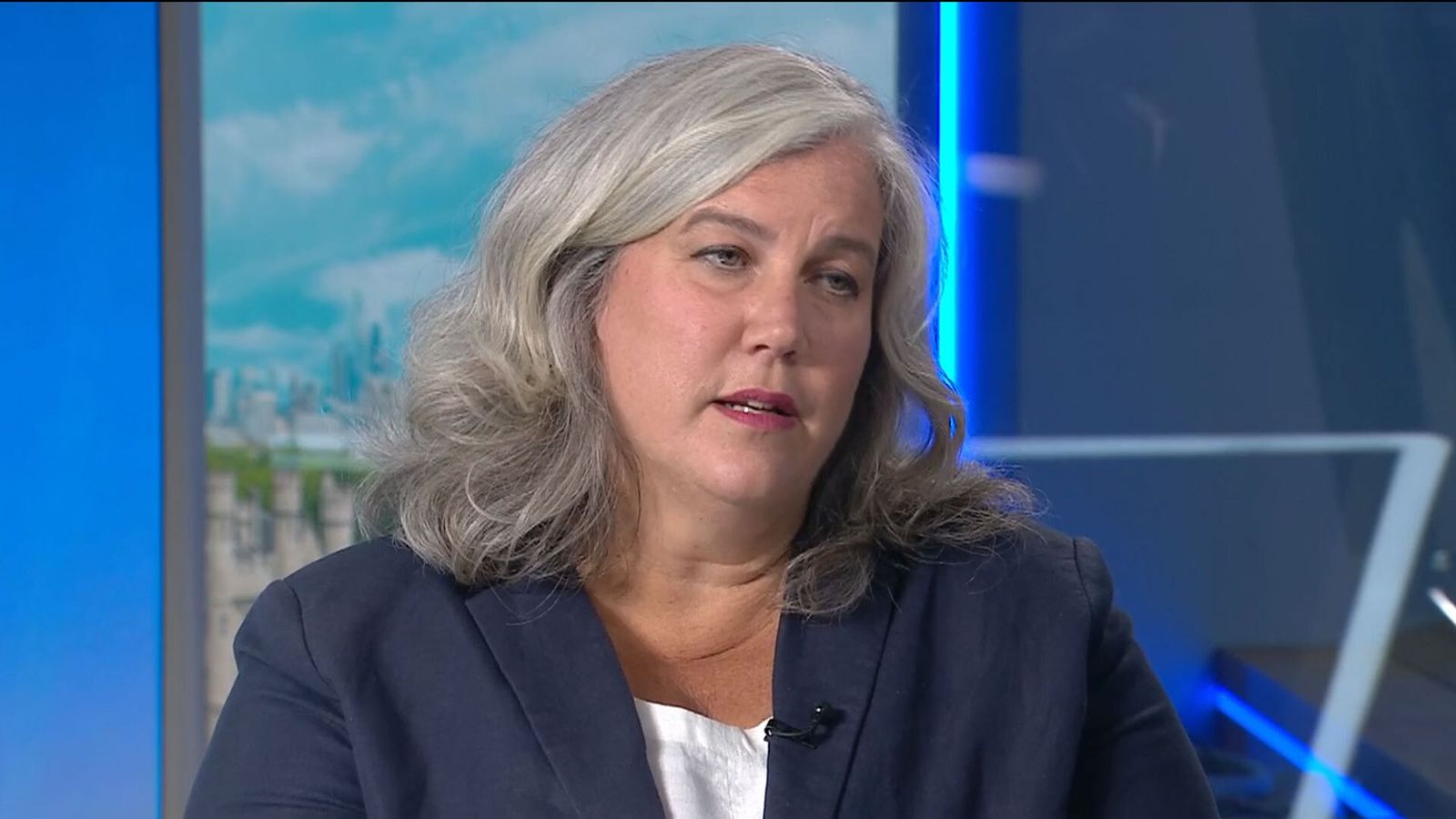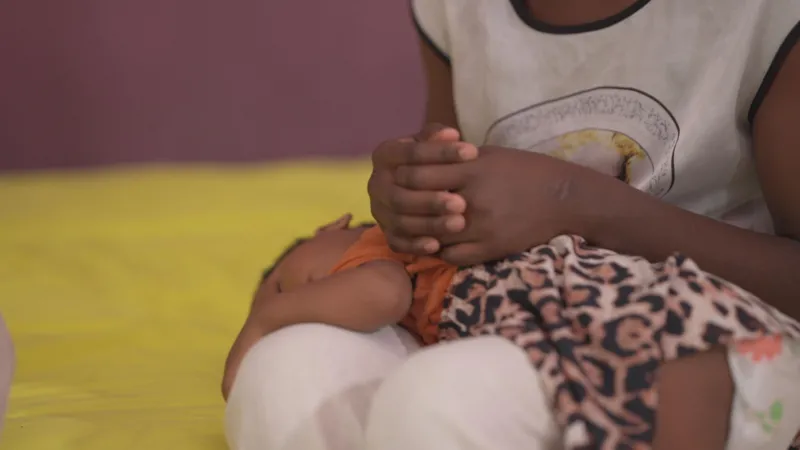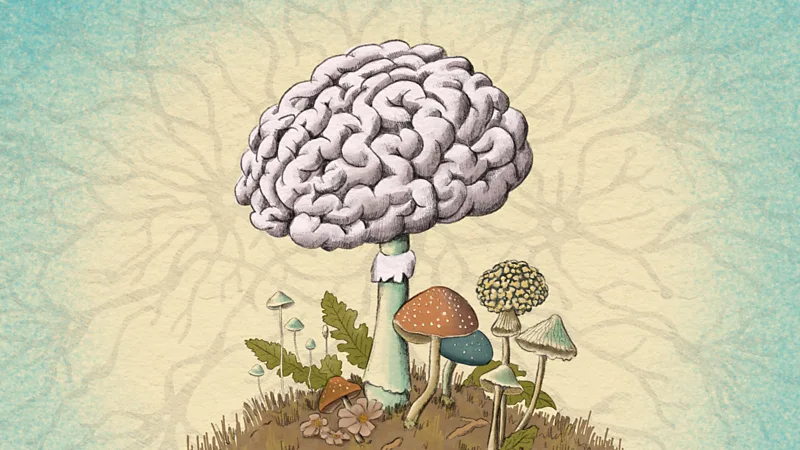Thirsty and exhausted, Texans feel the heat
As the sun rose over the ageing water tower that stands over the quiet town of Carrizo Springs, Texas - population 5,000 - so did the temperature.

By mid-morning, the town was sweltering. Parked cars quickly became unbearable and the streets were largely devoid of people, except for a few construction workers drinking water and seeking shelter from the sun.
The air felt heavy and walking outside for more than a few minutes at a time was difficult, even for residents long-accustomed to the scorching temperatures of south Texas.
"[This year] feels different... it's even hard to take a deep breath in," said Ann Margaret Valdez, the director of Dimmit Regional Hospital's emergency department, as she glanced out a window towards a parking lot in which heat was visibly coming off the pavement.
"The heat is just too intense, and the humidity makes it worse."
How hot is too hot for the human body?
The dangerous reality of a Texas summer is by now familiar to the staff at the hospital, which serves a largely rural community in an arid and almost entirely shade-less expanse that covers two sun-stricken counties, about 116 miles (186 km) south-west from San Antonio.
"Usually, when people come in with severe heat exhaustion, they have a very rapid heart rate. They're kind of confused and they're not responding very well," Rodrigo Gutierrez, the hospital's trauma nurse co-ordinator, told the BBC.
"Or they will come in and are asleep," he added. "Exhausted to the point where they lose consciousness".
Even with precautions in place, back-to-back days of scorching temperatures as high as 42C can end in tragedy. Despite the heat, hospital staff say, some workers continue to push themselves until it is too late.
"What really gets us is when we see patients come in with temperatures of 109F and are unresponsive. We have to do CPR. It's just very sad," Ms Valdez added. "These are young people".
Globally, experts believe that July will likely be the hottest month on record. Here in Texas, the month saw several cities shatter heat records, with some parts of the state seeing sustained temperatures over 37 C for days on end.
The number of hospitalisations and deaths across Texas during this summer's heatwave remains unclear, but data from the Center for Disease Control and Prevention (CDC) and the Texas Department of State Health Services shows that thousands were treated for heat-related illnesses across the state in June and July.
Officials have said the true total is likely far higher, because of incomplete reporting,
More than 30 people are reported to have died this year, including 11 in Webb County on the Mexican border. Last year, more than 300 people died of heat-related causes, the highest figure in decades.
Efforts to keep residents safe, however, are complicated by the fact that across the state, many workers are unable to avoid prolonged exposure to the sun and heat. In Dimmit County, for example, many workers are employed on farms, or in the oil and gas industry.
"It's hot, but what's to be done? If you don't work, you don't eat," said Juan Gomez, an agricultural worker who lives near San Antonio. Even with ample water and rest breaks, he added, the heat "can really affect you if you don't take care".
Other workers are more dismissive of the dangers.
"It's Texas...it's hot," said Everardo Ramirez, a construction worker. "I'm pretty used to it."
To mitigate the impact of the heat, officials and health authorities across the state have taken a range of safety measures, including the opening of cooling centres, fan giveaway drives and community outreach and education programmes aimed at making people aware of the dangers.
How many residents take advantage of these programmes, however, is unclear. The BBC briefly visited two cooling centres in South Texas, only to find them largely empty.
In nearby San Antonio, many of the city's main tourist sites, such as the River Walk, remain busy - even during the hottest hours of the day. Joggers breeze through public parks and outdoor workers - from construction workers to employees promoting restaurants - continue to ply their trade.
One construction worker in San Antonio, Alejandro Sanchez, told the BBC, "it's hot, but I take care of myself", while enjoying his afternoon lunch seated on a plastic chair in the blazing sun.
He was "not very worried", he added, even as temperatures rose above 37 C.
This attitude stands in stark contrast to warnings from local officials, some of whom fear the worst is yet to come. Temperatures are expected to rise again this week as we head into August, historically the state's hottest month.
"We're going to have some challenges ahead of us," said Roland Gutierrez, a state senator whose district covers a 35,000 square-mile swathe (90,600 sq km) of south Texas.
"Global warming is real, and we're in the midst of it... people are dying."
Health officials' concerns are compounded by a new Texas law, signed by Governor Greg Abbott in June, which effectively overrides city and county-level regulations for people working outdoors.
Supporters of the law, known as Texas Bill 2127, have argued that rules were applied "inconsistently" across jurisdictions and encroached on the state government's ability to regulate commerce and trade.
But the law is facing legal challenges and scathing criticism from the cities of San Antonio and Houston. Last week, Greg Casar, an Austin congressman, went on a "thirst strike" in Washington DC, refusing to drink water for eight hours in protest of the new law.
In a letter, Mr Casar, and more than 100 other US lawmakers, called for federal standards to be put in place.
The letter stated that heat protection "is a matter of life and death for many workers and their families" across the US. It cited a number of specific incidents of workers dying in Texas due to the heat this year, including a 40-year-old postal worker who died in 46C heat.
Elias Diaz, a city councilman in the town of Eagle Pass, who also works at the county's district hospital, told the BBC he feared profits would ultimately trump safety concerns at some work sites across the state.
"[The law] is another example of giving in to special interest groups, big companies and corporations," he said.
"They may not want to provide protections for their workers and people that are caught at the bottom that need these jobs."
Mr Diaz added that he is especially worried for low-income workers who do not have access to healthcare.
This prospect, combined with the possibility of even hotter temperatures in the years to come, has left many Texas residents anxious.
"This is an unknown experience for us. We now realise these temperatures we're suffering aren't normal," said Martha Dominguez, a Laredo resident who said that even the brief commute to and from her job at the front desk of a local doctor's office has become difficult.
"We're scared, because even though we're used to this heat, it's never been like this".
And as the sun rose in Carrizo Springs, staff at Dimmit Regional said they are keenly aware what rising temperatures would mean for the community they serve.
"That worries us, for our people here," said Carmen Esquivel, the hospital's chief nursing officer and interim CEO. "It's worrisome, not only here, but everywhere in south Texas".
-bbc







